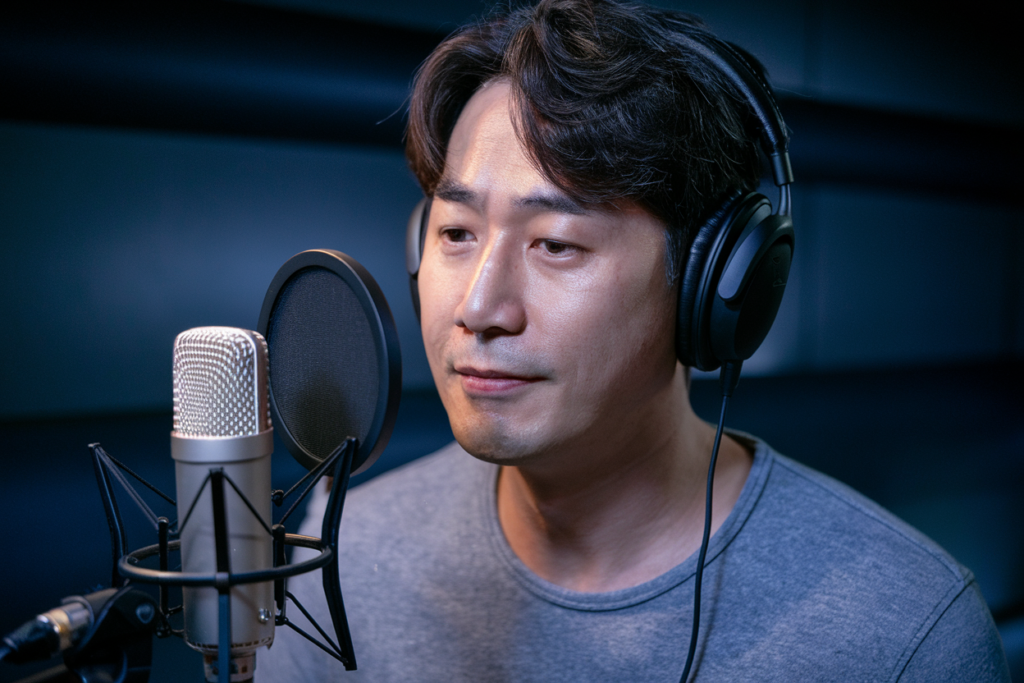Key Takeaways
- Global Speaker Population: Approximately 80 million people speak Korean, with South Korea (52 million) and North Korea (25 million) being the largest populations of native speakers.
- Significant Communities Abroad: Notable Korean-speaking communities exist in the United States (over 1.1 million), China, Japan, and Russia, reflecting the language’s international reach.
- Growing Interest in Learning: The increasing popularity of K-dramas and K-pop has spurred a global rise in interest for learning Korean, accessible through online platforms and mobile apps.
- Demographic Trends: A significant portion of Korean speakers are aged 20 to 39 years old, with a higher percentage of female learners engaging with the language through cultural media.
- Cultural Impact on Language Popularity: Korean media influences language acquisition as fans seek deeper connections to their favorite shows and songs, driving demand for skilled voice talents familiar with cultural nuances.
Ever wondered just how many people speak Korean around the world? With its rich culture and growing global influence, understanding Korean language speakers statistics can give you valuable insights into this fascinating language.
Overview of Korean Language Speakers
Korean boasts approximately 80 million speakers globally, making it a significant language in East Asia and beyond. South Korea hosts the largest population of native speakers, estimated at around 52 million. North Korea contributes about 25 million speakers, reflecting the language’s prominence in both countries.
The Korean language extends beyond national borders. Significant communities exist in the United States, China, Japan, and Russia. In these regions, Korean-speaking populations can reach millions. For instance, estimates suggest over 1.1 million Koreans reside in the U.S., primarily concentrated in states like California and New York.
Understanding these statistics highlights not only the linguistic reach but also cultural connections tied to the language. The growing interest in Korean culture—such as K-dramas and K-pop—fuels an increase in learners worldwide. This rising demand creates opportunities for voice talents specializing in Korean content, catering to audiences seeking authentic experiences.
Korean’s unique writing system, Hangul, further broadens its accessibility for new learners. With a logical structure and phonetic clarity, many find it easier to learn compared to other languages with complex scripts.
These insights into speaker demographics illustrate the importance of engaging with this rich linguistic landscape—whether for business ventures or cultural exchanges—and underscore how vital it is to connect with qualified voice artists who can bring authenticity to your projects involving the Korean language.
Global Distribution of Korean Language Speakers
Korean boasts a diverse global presence, with millions of speakers spread across various countries. Understanding where these speakers are located can enhance your appreciation for the language and its cultural significance.
Statistics by Country
South Korea leads with approximately 52 million native speakers, while North Korea adds around 25 million to this figure. The United States houses over 1.1 million Korean speakers, significantly influenced by growing interest in K-culture. China follows closely, hosting several hundred thousand Korean speakers, primarily in regions like Yanbian and Shenyang. Japan also has a notable community of about 600,000 Korean residents who maintain their linguistic heritage despite living abroad.
| Country | Estimated Number of Speakers |
|---|---|
| South Korea | 52 million |
| North Korea | 25 million |
| United States | Over 1.1 million |
| China | Several hundred thousand |
| Japan | About 600,000 |
Trends in Korean Language Learning
Interest in learning Korean is on the rise globally. This trend correlates with the popularity of K-dramas and K-pop music, motivating many to dive into the language’s intricacies. Online platforms and mobile apps make it easier than ever to start learning resources that cater to various skill levels.
You might wonder why this matters if you’re considering voice talent needs for projects involving Korean language content. Engaging a qualified voice artist familiar with cultural nuances can bring authenticity to your project, enhancing overall audience connection.
As more people seek proficiency in Korean for personal or professional reasons, exploring opportunities within this growing demographic opens doors for engaging narratives that resonate deeply—whether you’re looking at educational materials or entertainment content driven by genuine cultural representation.
Demographics of Korean Language Speakers
Korean language speakers represent a diverse global community. Understanding the demographics helps appreciate the cultural richness and the opportunities available in this linguistic landscape.
Age and Gender Breakdown
Korean speakers span various age groups, with a significant concentration among younger demographics. Approximately 40% of Korean speakers fall within the 20 to 39 age range, driven largely by cultural phenomena like K-dramas and K-pop that resonate with younger audiences. This trend fosters interest in learning Korean among youth globally.
Gender distribution shows a slight skew towards females, particularly in language-learning environments. In educational contexts, approximately 60% of learners are women, reflecting their enthusiasm for engaging with Korean culture through music and media.
Educational Background
The educational background of Korean speakers varies widely, influenced by regional access to education and personal interests. Many native speakers possess at least secondary education, with increasing numbers pursuing higher education degrees in fields such as linguistics or international studies.
Additionally, non-native learners often come from diverse academic backgrounds. Many enroll in formal classes or use online platforms to develop their skills further. About 30% of learners partake in self-study programs facilitated by mobile apps or online courses focusing on conversational skills and pronunciation accuracy.
As you engage with this vibrant demographic, consider how understanding these nuances can enhance your projects involving voice talent who specialize in Korean content. Whether it’s selecting a voice artist for narration or finding an authentic voice actor for character roles, grasping the audience’s diversity plays a critical role in connecting effectively through language.
The Impact of Korean Media on Language Popularity
Korean media significantly influences the popularity of the language across the globe. K-dramas and K-pop dominate streaming platforms, attracting millions of viewers and listeners. This surge in interest creates a unique opportunity for you as a client seeking voice talent who understands these cultural nuances.
The rise of Korean entertainment fosters an environment where learning the language becomes appealing. Many fans want to connect with their favorite shows or songs on a deeper level, prompting them to pursue Korean lessons. As they immerse themselves in this vibrant culture, they often seek out resources that enhance their understanding—like engaging voiceovers that resonate with authentic storytelling.
Social media amplifies this trend by showcasing viral clips from dramas and music videos. These snippets entice audiences to learn phrases or even entire dialogues in Korean. You might notice how voice actors can elevate these experiences through relatable performances, enriching the overall impact of content created for international audiences.
Demographics also play a critical role here; younger generations are leading the charge in adopting the language due to its association with popular culture. This age group values authenticity in communication and appreciates when voiceover artists capture the essence of characters or themes presented in Korean media.
Moreover, many educational programs have emerged focused on teaching Korean through pop culture references—integrating song lyrics or famous drama quotes into lessons. These methods make learning enjoyable while emphasizing practical use cases for new speakers. Engaging voice over talent can further bridge gaps between cultures by delivering compelling narratives that reflect these elements effectively.
As demand for quality content rises alongside interest in learning Korean, there’s an increasing need for skilled voice actors who understand both language intricacies and cultural significance. Your ability to source talented individuals will ensure projects resonate well with target audiences worldwide while maintaining authenticity throughout every performance.
Conclusion
The growth of Korean language speakers highlights its rising global importance. As interest in Korean culture continues to soar you’re likely to see more individuals eager to learn the language. This trend not only enriches personal connections with Korean media but also opens up professional opportunities in voice acting and content creation.
Understanding these statistics helps you appreciate the depth of this linguistic landscape. Engaging with native speakers and embracing educational resources will enhance your journey into the world of Korean language and culture. By diving into this vibrant community you can unlock new experiences and forge meaningful connections that transcend borders.
Frequently Asked Questions
What is the significance of the Korean language globally?
The Korean language holds global significance due to its approximately 80 million speakers, with strong communities in countries like the U.S., China, Japan, and Russia. The rising popularity of K-dramas and K-pop is also contributing to a growing number of language learners, making it increasingly relevant in today’s interconnected world.
How many native speakers are there in South Korea and North Korea?
South Korea has about 52 million native speakers of Korean, while North Korea adds around 25 million more. Together, they represent a significant portion of the global Korean-speaking population.
Why is interest in learning Korean increasing?
Interest in learning Korean is surging primarily due to the global influence of K-dramas and K-pop. Fans often want to engage more deeply with their favorite shows and music, driving them to learn the language.
What makes Hangul unique as a writing system?
Hangul is unique because it features a logical structure that enhances phonetic clarity. This accessibility makes it easier for new learners to grasp compared to other writing systems.
Who are the typical learners of the Korean language?
Typical learners include younger individuals aged 20 to 39 years old, with a slight skew towards females. Many have at least secondary education and come from diverse academic backgrounds.
How does social media impact interest in learning Korean?
Social media amplifies interest by showcasing viral clips and content related to K-dramas and K-pop. These platforms entice audiences to learn specific phrases or expressions from their favorite shows or songs.
What role do educational programs play in learning Korean?
Educational programs that incorporate pop culture references make learning enjoyable and practical. They help students connect with contemporary aspects of Korean culture while gaining language skills simultaneously.
Why is there a demand for skilled voice actors specializing in Korean content?
As demand for quality content increases, there’s a need for skilled voice actors who understand both the intricacies of the language and its cultural context. Authenticity enriches projects involving Korean media, enhancing audience connections through genuine performances.







